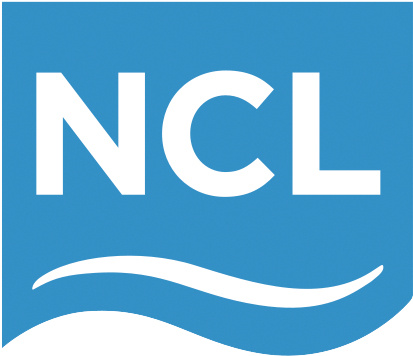The Port of Reykjavik is located on the southwest coast of Iceland and serves as the country's largest port and the capital city's maritime gateway. It is a key hub for both commercial shipping and a growing number of cruise lines exploring the North Atlantic and Arctic regions.
The port is comprised of several harbors, with the Sundahöfn harbor and its Skarfabakki Quay being the primary location for large cruise ships. Its modern facilities and deep harbor can accommodate some of the world's biggest vessels, making it a vital and bustling stop on many Icelandic and transatlantic cruise itineraries.
Reykjavik offers several unique attractions that are easily accessible from the port. The iconic Hallgrímskirkja church dominates the city skyline, and visitors can take an elevator to the top for panoramic views. It is located in the city center, a short bus or taxi ride from the main cruise pier.
Along the waterfront, you can find the stunning Harpa Concert Hall with its distinctive glass facade, and the elegant Sun Voyager sculpture. A short distance from the center is Perlan, a museum and planetarium built atop hot water storage tanks, which features an observation deck with 360-degree views of the city and its surroundings.
Last updated on June 20, 2025
The most popular day trip from Reykjavik is the Golden Circle, a route that covers some of Iceland's most stunning natural wonders. The circuit is about 250 kilometers (155 miles) and typically takes 8 hours to complete with stops. Key sights include Þingvellir National Park, the powerful Gullfoss waterfall, and the geothermal area featuring the Geysir hot spring.
Another highly sought-after destination is the Blue Lagoon, a world-famous geothermal spa. It is located about 49 kilometers (30 miles) from Reykjavik, with a travel time of approximately 45-50 minutes by car or bus.
Last updated on June 20, 2025
Reykjavik has a few docks, but most large cruise ships arrive at the Skarfabakki Quay in the Sundahöfn harbor. This pier is located approximately 3-4 kilometers (about 2-2.5 miles) east of the city center.
Due to the distance, it is not considered comfortably walkable, and passengers typically need transportation to reach downtown. Shuttle buses (often provided by the cruise line) and taxis are the most common options.
The port terminal at Skarfabakki offers basic facilities such as restrooms and a tourist information desk. Some smaller ships may occasionally dock at the Old Harbour, which is conveniently located right in the heart of the city.
Last updated on June 17, 2025
The official currency is the Icelandic Króna (ISK). While some tourist-focused shops may accept US Dollars or Euros, the exchange rate will not be favorable.
Credit cards are universally accepted, even for small purchases, and are the most convenient method of payment. ATMs are widely available throughout the city for withdrawing local currency. It is advisable to inform your bank of your travel plans to avoid any issues with card usage.
Last updated on June 17, 2025
Iceland is renowned for being one of the safest countries in the world, with very low crime rates. Reykjavik is generally very safe for tourists to explore independently, even at night. Standard precautions against petty theft, such as pickpocketing in crowded areas, are advised but incidents are rare.
The primary safety concerns for visitors are related to Iceland's powerful natural environment. It is crucial to respect all safety warnings, stay on marked paths at tourist sites, and be cautious near geothermal areas, powerful waterfalls, and coastal cliffs. Always check weather conditions before heading out, as they can change rapidly.
Last updated on June 17, 2025
The primary cruise season in Reykjavik is during the summer months, from June to August. During this period, you can expect long daylight hours, thanks to the Midnight Sun.
Summer temperatures are cool, typically ranging from 8°C to 14°C (46°F to 57°F). However, the weather is famously unpredictable and can change in an instant. It is common to experience sun, wind, and rain all in the same day.
Packing layers is essential. A waterproof and windproof jacket, warm sweater or fleece, sturdy walking shoes, a hat, and gloves are recommended regardless of the season to ensure you are prepared for all conditions.
Last updated on June 17, 2025
The main cruise dock, Skarfabakki, is not within walking distance of the city center, so transportation is necessary. Cruise lines typically offer shuttle buses to a central point downtown, often for a fee.
Public transportation is managed by Strætó, which operates an efficient bus network around the city. Taxis are also available at the port but are quite expensive.
Ride-sharing services like Uber or Lyft do not operate in Iceland. Once in the city center, the main tourist area is compact and easily explored on foot.
Last updated on June 17, 2025
The main shopping street in Reykjavik is Laugavegur, which offers a wide array of stores from high-end boutiques to souvenir shops. The adjacent Skólavörðustígur street, leading up to Hallgrímskirkja, is known for its art galleries and design shops.
Popular local specialties include Icelandic wool sweaters known as 'lopapeysa', volcanic rock jewelry, and high-quality skincare products made with local ingredients like silica and algae. Prices are fixed, and bargaining is not part of the local culture. Non-resident visitors may be eligible for a tax refund on purchases exceeding a certain amount, so be sure to ask for the necessary paperwork at the time of purchase.
Last updated on June 17, 2025











Showing 2 ships in port and 1 ship in the area


Last updated on June 13, 2025
Many ships use Skarfabakki terminal, requiring a 10-15 min shuttle bus (often provided by the cruise line or for a fee) or taxi to reach downtown. Some smaller ships may dock at Miðbakki, closer to the city center.
Must-see attractions include Hallgrímskirkja church, Harpa Concert Hall, the Sun Voyager sculpture, and the Old Harbour, many within walking distance or a short bus ride from the city center.
Try an Icelandic hot dog ('pylsa'), fresh seafood, or lamb soup. Restaurants and food stalls in the Old Harbour area or along Laugavegur street offer diverse local options.
The local currency is Icelandic Króna (1 USD = 124.34 ISK). ATMs are widely available in Reykjavik, particularly downtown and in shopping areas; credit cards are accepted almost everywhere, so exchanging large amounts of cash is generally not needed.
Summer cruise season (May-Sept) sees average temperatures of 46-57°F (8-14°C) with wind and potential rain; pack layers, including a waterproof and windproof jacket, warm sweaters, and sturdy walking shoes.
Nauthólsvík Geothermal Beach, with golden sands and geothermally heated water, is a unique spot accessible by city bus (approx. 20-30 min) or taxi from downtown.
Popular options include the Golden Circle, Blue Lagoon, and whale watching tours, available through cruise lines or independent operators; independent tours may offer more flexibility or smaller groups.
Laugavegur is the main shopping street for souvenirs like Icelandic wool sweaters (lopapeysa), volcanic jewelry, and local crafts. The Kolaportið flea market (weekends) offers unique finds.
The Golden Circle (Þingvellir National Park, Gullfoss waterfall, Geysir geothermal area) and the Blue Lagoon geothermal spa are popular day trips, typically requiring a guided tour or pre-booked transport.
Reykjavik is powered almost entirely by geothermal energy, making it one of the world's cleanest and greenest capital cities, and it has no mosquitoes.
On average Reykjavik is moderately inexpensive compared to other ports. Prices are approximately equal throughout the year. Take a look at the graph below for the monthly average cost per day.
Want to hear about the best deals and cruise tips every week? Sign up for our free weekly VIP Newsletter, customized exactly to your preferences!